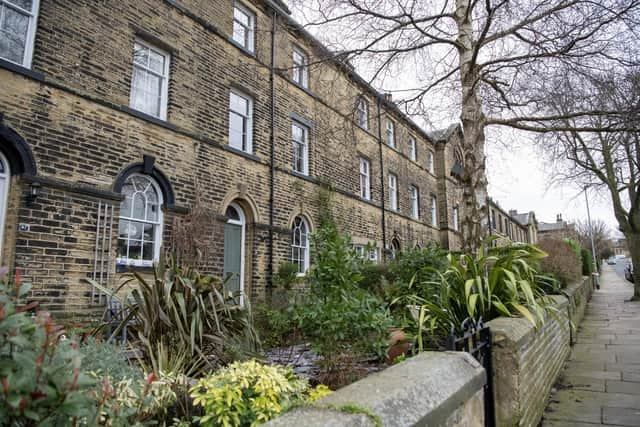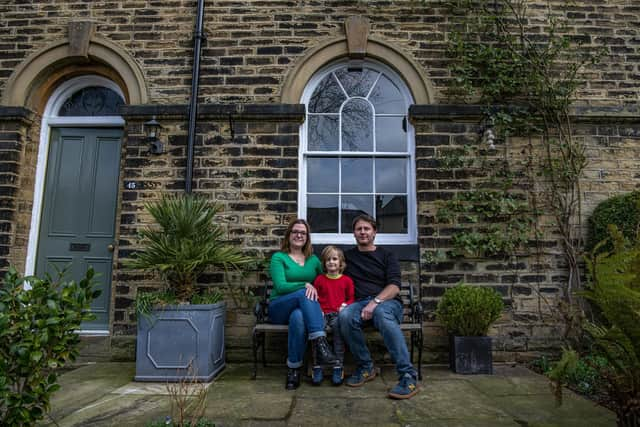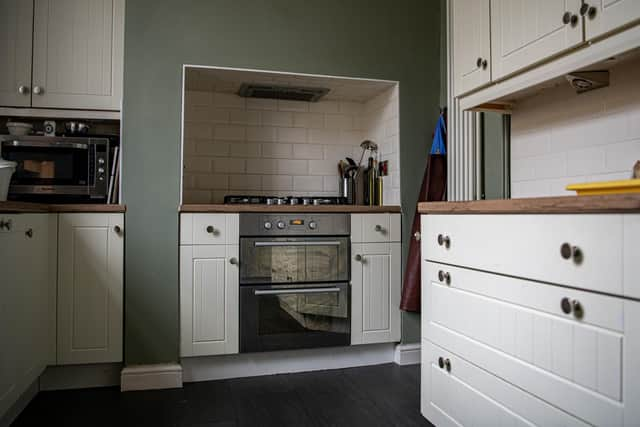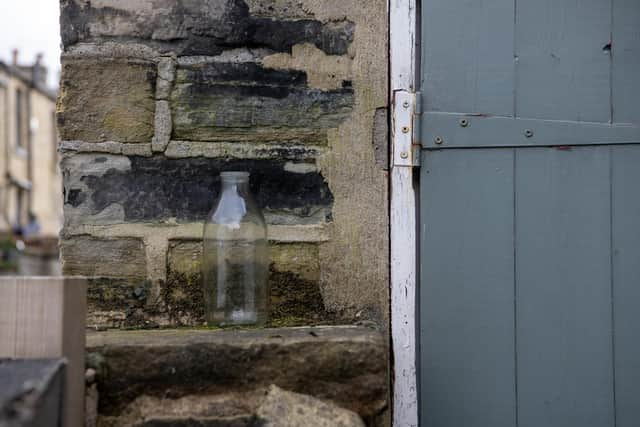Yorkshire House Histories: Inside one of the original mill workers' cottages built by Sir Titus Salt in Saltaire
It is ironic that James Roberts ended up living in Saltaire – he has the same name as the wool baron who bought Salts Mill and the entire workers’ village from Sir Titus Salt’s family in the 1890s.
Today, the UNESCO World Heritage Site near Bradford is a tourist magnet thanks to its fantastically preserved cottages, shops and public buildings. Visitors gaze with envy at the original Salt houses, built in terraces in the middle of the 19th century and underpinned by Sir Titus’s visionary philanthropy and interest in public health and employee welfare.
Advertisement
Hide AdAdvertisement
Hide AdIt was always a commonly-believed myth that the cottages’ tenants had to work in the mill – many employed elsewhere still rented from the Salts and families with adult children could afford the larger houses intended for managers. By the 1930s, they were being sold into private ownership for the first time.


James Roberts, his partner Marie and their six-year-old son are on Albert Road, in a three-storey house. The family moved from Leeds around a decade ago, having fallen in love with Saltaire when visiting for its annual arts trail. Both commuted into Leeds from the village’s railway station.
Albert Road – most of the streets are named after Salt’s relatives, including all of his children, though Albert Road is in honour of Queen Victoria’s husband Prince Albert – has a mixture of properties, including Saltaire’s only detached villa, now occupied by an estate agency. There are some semi-detched houses and terraced cottages with two or three floors.
James said: “Houses in the village weren't tied to work at the mill, but different levels of housing were built with roles at the mill in mind. My house was built in 1866 and was originally designated as an 'improved overlooker's house'. It is a similar size to the semi-detached houses, though the original fittings are much plainer, with more of the house dedicated to bedroom space than in the houses intended for managers.
Advertisement
Hide AdAdvertisement
Hide Ad"The house originally had six bedrooms. It now has four - two have been joined together and the original master bedroom was converted into a bathroom when indoor toilets were added in the 1930s.”


James is involved in Saltaire History Club, which has given him the expertise to study the house’s census records. The previous owners even included some research in a welcome pack for them.
It didn’t appear that an overlooker had lived in the house for long, if ever. In the first relevant census, 1871, the tenant, Mary Kaye, was a housekeeper. Her son, four daughters and grandson lodged with her, with four of the children working at the mill.
Ten years later, the head of the household was mason’s labourer Joseph Feather, who had nine children with his wife, five working at Salts.
Advertisement
Hide AdAdvertisement
Hide Ad“The house is a decent size for our family, though I can't imagine 11 people living in it!” added James.


The house was originally number 23, but was renumbered in the 1930s when new properties were built across the road. The old number can still be seen carved into the stonework, and there is an outdoor privy in the yard.
Salt provided numerous amenities for his employees – there were sports grounds, reading and lecture rooms, a library, chapel, allotments, wash-house, Sunday school and infirmary. Many are still in existence and perform similar roles for the community today. The outdoor toilets have become sheds, and even the smaller houses had yards – on Albert Road, George Street and William Henry Street there are also front gardens.
James and Marie recognise their role as custodians of an historic property, and their renovations have sought to preserve rather than disguise its heritage. They have exposed the original stone-flagged floor in the front room, and managed to add modern touches such as loft insulation and double glazing despite the restrictions that come with its Grade II listing.
Advertisement
Hide AdAdvertisement
Hide AdJames added: “I'm sure that the original vision and architecture of Saltaire continue to play a large part in what makes it a great place to live today. There's a strong and friendly community here, as well as lots of shops, restaurants, cafes and bars.


“Our experience of tourists has been positive - we often get a friendly hello from visitors or have a quick chat to help them find their bearings. I enjoy seeing the local guides who lead tours of Saltaire in period costume and benefit from the good local shops, including those at the mill which benefit greatly from tourism. Saltaire also gets quite a lot of more local visitors from Leeds and elsewhere in Bradford who come to visit the bars and restaurants.
“It can sometimes be a surprise to open the door in the summer to find people taking photos though!”
House Histories – do you have a property with a story to tell?
Advertisement
Hide AdAdvertisement
Hide AdWe’d love to hear from anyone who would like their home to be featured in our House Histories series. The property (whether owned or rented) doesn’t have to be centuries old. Perhaps you have already researched a bit of its past, or maybe it was built for a specific purpose, such as for railway or canal workers, or was tied to an estate. Perhaps it’s got a particulary distinctive appearance, is in a recognisable location, once had a prominent or interesting occupant or still contains its original features.
Retired teacher Elizabeth Bowen, from a village near Keighley, spoke to us about her old farmhouse when she researched it during lockdown, but you don’t need to know an extensive or detailed history of the dwelling to be featured.
If you’re keen for your home to take part, or know one which may be suitable, email [email protected]
